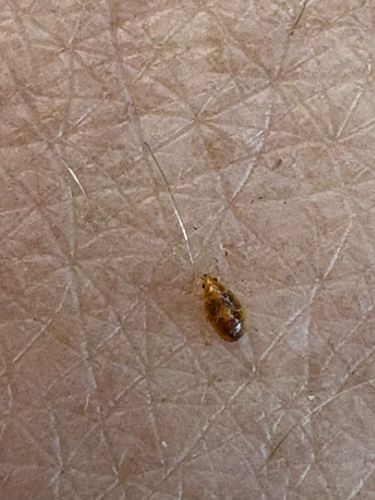Carpet Beetle (likely Varied Carpet Beetle or Black Carpet Beetle larva)
Scientific Name: Dermestidae (various genera and species, e.g., Anthrenus verbasci for Varied Carpet Beetle, Attagenus unicolor for Black Carpet Beetle)
Order & Family: Order: Coleoptera, Family: Dermestidae
Size: Larvae typically range from 2mm to 5mm (0.08 to 0.2 inches) in length, depending on the species and developmental stage. They are often hairy and tapered at one end.

Natural Habitat
Indoors, especially in homes, museums, and warehouses. They prefer dark, undisturbed areas like carpets, rugs, upholstered furniture, closets, attics, and often infest stored food products, pet bedding, and natural fiber textiles.
Diet & Feeding
Carpet beetle larvae are scavengers, feeding on a wide range of animal products and organic materials. This includes wool, silk, feathers, leather, furs, pet hair, dead insects, museum specimens, dried food products, and even synthetic fabrics soiled with food.
Behavior Patterns
Carpet beetle larvae are typically found in dark, undisturbed areas where their food sources are abundant. They are slow-moving and tend to avoid light. The adult beetles are attracted to light and are often seen near windows. Their life cycle involves complete metamorphosis: egg, larva, pupa, and adult. The larval stage is the most destructive, as it actively feeds on organic materials.
Risks & Benefits
Risks: Carpet beetles are considered household pests. Their larvae can cause significant damage to natural fiber textiles (carpets, woolens, furs, silks), stored food, and museum collections. While they do not bite humans, some people may experience skin irritation (dermatitis) due to allergic reactions to the larval hairs. Benefits: In nature, they play a role in decomposition by breaking down organic matter.
Identified on: 8/15/2025